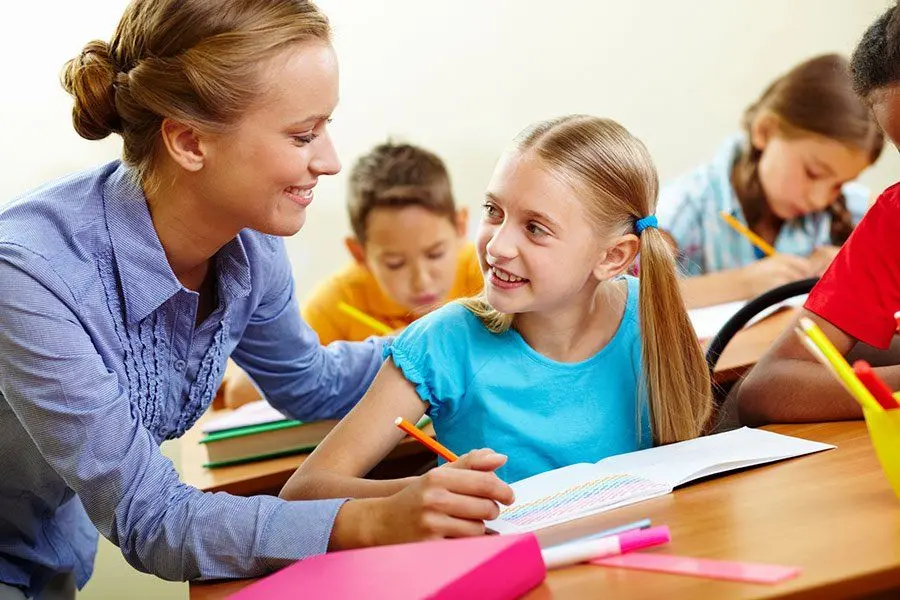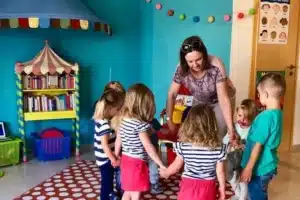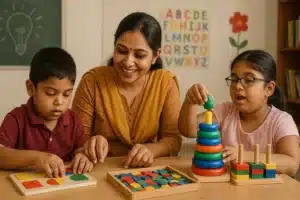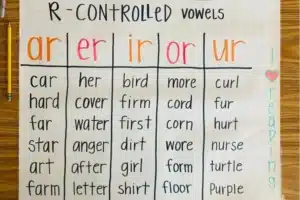
Discovering the best treatment for a dyspraxia kid starts with knowing what is best for him or her as an individual. Dyspraxia Treatment typically consists of a mix of therapies that introduce required motor and coordination skills. Occupational therapy is most widely used, taking children through practical, everyday activities to help develop their day-to-day functioning. Along with this, Dyspraxia Treatment can also include speech therapy, perceptual motor training, and movement play to aid in communication and body development. Every process is meant to make daily activities easier and improve the confidence of the child.
Symptoms and Causes of Dyspraxia
Our body can perform complex coordinated movements only when several nerves and parts of the brain coordinate accurately. Dyspraxia is a condition where the brain has suffered an injury, due to which communicate signals to other parts of the body is affected.
Due to this child with dyspraxia finds it difficult to function independently and might appear disorganized or clumsy to others. Since motor skills form the foundation for overall physical development, dyspraxia hampers the child’s overall progress, affecting their daily functioning and social engagement.
Understanding the root causes of dyspraxia helps to ascertain the exact areas of struggle for the child, which helps to chalk out a suitable plan for the child to progress positively in the right direction.
Symptoms of Dyspraxia
Dyspraxia symptoms are specific depending on each child’s condition, but the most common signs are:
Overall Poor Physical Development
Children find it difficult to perform basic activities such as running, jumping, or even throwing a ball.
Fine Motor Skills Issues
Skills that require the use of fine muscles, such as fingers that are needed for writing, eating, and doing daily tasks, are not properly developed.
Multi-step process issues
Tasks that need a multitude of steps, e.g., following a morning schedule, can be a real struggle for the child.
Balancing Issues
Children find it difficult to reach their destination and trip quite often and bump into objects frequently.
Poor Sensory Processing
Due to the brain’s lack of processing signals, children with dyspraxia have low sensitivity towards touch, noise, textures, or other sensory input.
Causes of Dyspraxia
Some of the most well-known factors that contribute to causing dyspraxia are listed below;
Neurological Development
Differences in how the brain develops and processes signals related to movement and coordination.
Brain Injuries
In some cases, early injury to the brain—before, during, or shortly after birth—may be linked to dyspraxia.
Genetic Influences
Family history and inherited traits may play a role, although specific genes have not been identified.
Unidentified Factors
Encourages movement in an interactive, enjoyable manner that builds motor skills progressively.
Accurately applied precise interventions, dedicated efforts by teachers, and unwavering support of parents can make a huge impact on the overall progress of children with dyspraxia. A conducive classroom environment designed to ensure the safe movement of dyspraxic children helps them become confident to function independently and effectively.
For more Details of the LD Course, Call / WhatsApp on +919321024137 / +919869866277
To Download the Brochure of the LD Course, Click Here!

Treatment for Dyspraxia
Dyspraxia, the coordination disorder, needs therapy treatments followed by positive lifestyle changes, healthy dietary intake, and providing them with emotional support. Dyspraxia can’t be cured, but Dyspraxia Treatment can increase a kid’s confidence and ability to perform daily tasks. The goal is to strike a balance between an individual plan and some challenges and goals.
Common Approaches in Dyspraxia Treatment:
Occupational Therapy
This treatment aims to recover the child’s fine motor skills that help them focus better while performing simple tasks of writing and following a proper schedule.
Physical Healing Therapy
This helps to develop strength, balancing skills, and coordination competencies by engaging the child in powerful activities such as walking, jumping, and ball games.
Communication and Speech Treatment
Helps children focus on their speech and communication skills, helping them polish their communication skills.
Breaking down tasks
When complex tasks are broken down into easy, manageable steps, it helps them master simple steps that prove to be helpful while performing complex problems.
Assistive Technology
Offers tools like typing software or voice recognition to support writing and organization.
Active Play
Refreshes the child’s mind, making him active and encouraging movement joyously, building gross as well as fine motor skills.
For any dyspraxic child, being able to comfortably accommodate in a regular classroom, thoughtfully designed interventions, an accessible classroom environment, and constant guidance must be provided.
With the implementation of the above-mentioned strategies, dyspraxic children find it easy to navigate efficiently through their daily tasks. With increased ease in performing daily tasks, children become self-reliant, giving a huge boost to their self-esteem.
How to Help a Child with Dyspraxia Improve Motor Skills?
Every dyspraxic child has exclusive functioning problems, which means that each child will have a different set of challenges and struggles. To help a child with dyspraxia, the most important step is to identify which tasks are problematic for them, and accordingly, therapy should be administered that promotes these movements. All these activities should be highly engaging, where children enjoy moving around and participating in outdoor activities. They should be repetitive, engaging, and within the kids’ capabilities while gradually increasing confidence and control.
Ideas for Developing Gross Motor Skills in Children with Dyspraxia:
Physical Activity
Make it a habit to engage the child in movement-based physical activities such as playing simple ball games, cycling, and basic movements that improve endurance, patience, and coordination skills.
Balance Activities
The child should be involved in walking activities, especially on uneven grounds, broad wooden planks, which help them gain control of their body and judge the movements that can cause them trouble.
Strength Training
Using simple playful exercises such as climbing, jumping, or tug of war can develop muscle and support movement control.
Outdoor Play
Unstructured outdoor activities in parks or playgrounds allow children to move freely, explore different movements, and develop physical confidence.
The most important thing to establish is a patient and supportive setting. The encouragement of trying, the division of tasks into small steps, and the acknowledgment of small achievements can make children try again and again. These repeated attempts with or without therapeutic intervention can bring about slow progress in motor skills and general movement confidence in children with dyspraxia.
For more Details of the LD Course, Call / WhatsApp on +919321024137 / +919869866277
To Download the Brochure of the LD Course, Click Here!

Source: pinterest
How can teachers help Children with Dyspraxia?
Children with dyspraxia have issues with coordination and motor skills; therefore, efforts must be taken to facilitate their movement and improve their motor skills. This involves fun, repeated activity appropriate for the child’s level of ability, slowly improving their confidence and control.
Suggestions for Improving Gross Motor Skills in Children with Dyspraxia:
Physical Activity
Engage in daily outdoor activities that keep children engrossed and focused better. This helps in promoting their eye-hand coordination and overall body coordination skills.
Extend Time
Allow students extra time to finish written work, make activity transitions, or organize materials.
Modify Tasks
Substitute tasks if possible; instead of finger writing, have the student type, and instead of written reports, permit oral reports. In mathematics support typing instead of writing numbers?
Give Breaks to Move
Small, physical breaks during lessons may help with refocusing and fatigue.
Use supports
Provide pencil grips, slant boards, or assistive technology to modify writing or motor tasks.
Joining a Learning Disability Course can prepare teachers to better understand and address the unique needs of children with dyspraxia. Vidhyanidhi Education Society offers a well-structured Learning Disability Course that prepares teachers with effective tools and strategies. Completing a Learning Disability Course can improve a teacher’s ability to create an inclusive, supportive learning atmosphere for all students.
Transform learning challenges into strengths with Vidhyanidhi’s expert LD course today!
For more Details of the LD Course, Call / WhatsApp on +919321024137 / +919869866277
To Download the Brochure of the LD Course, Click Here!
FAQs
At what Age Does Dyspraxia Start?
Dyspraxia usually becomes apparent in early childhood or between the ages of 3 to 5 when motor delays and coordination difficulties first arise.
Can a Child Recover from Dyspraxia?
With therapy, support, and practice of motor skills and daily living skills, many children with dyspraxia will improve their performance.
How to Teach Kids with Dyspraxia?
To teach dyspraxic children, create a systematic plan with step-by-step instructions, graphic organizers, and extra time.



